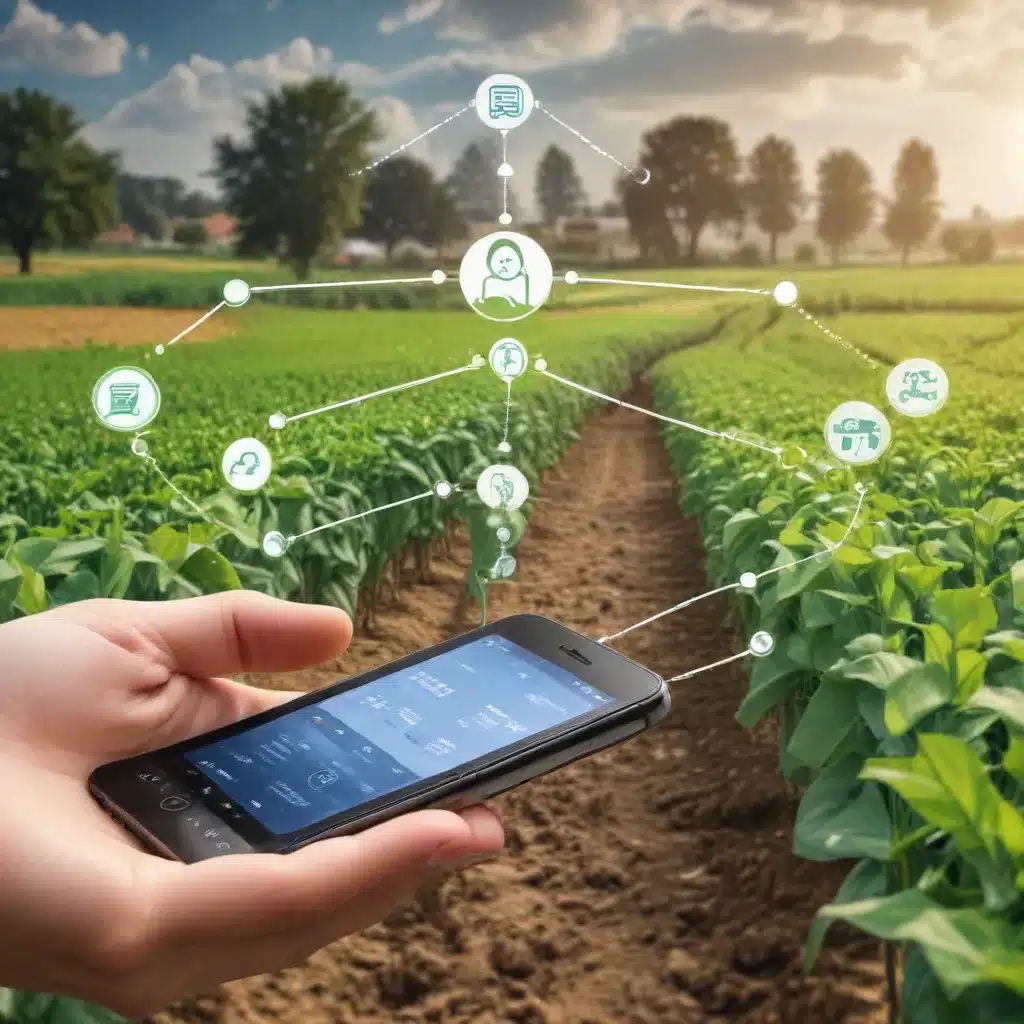
The Rise of IoT in Agriculture
The Internet of Things (IoT) has revolutionized the way we approach agriculture, transforming traditional farming practices into highly efficient, data-driven operations. As the global population continues to grow, the pressure on agricultural systems to produce more food with fewer resources has never been greater. IoT technology has emerged as a game-changer, providing farmers with the tools and insights needed to optimize crop and livestock management, reduce waste, and improve sustainability.
Precision Crop Farming: Maximizing Yield and Efficiency
One of the key applications of IoT in agriculture is precision crop farming, which leverages a range of sensors and technologies to monitor and manage crop growth at the individual level. Soil sensors can provide detailed insights into the nutrient content, moisture levels, and other critical parameters, allowing farmers to precisely tailor their inputs and irrigation strategies. Precision seeding techniques, enabled by advanced seed metering devices and control systems, ensure consistent crop emergence and minimize seed waste.
Smart irrigation systems, powered by IoT, can automatically adjust water application based on real-time data from soil moisture sensors and weather forecasts, optimizing water usage and reducing unnecessary consumption. Furthermore, variable-rate fertilization technologies allow for the targeted application of nutrients, minimizing over-fertilization and the associated environmental impact.
The ability to monitor and predict grass yield using optical sensing techniques, such as LiDAR and multispectral imaging, has revolutionized the management of pastures and forage crops. By combining these technologies with unmanned aerial vehicles (UAVs) and advanced data analysis, farmers can make informed decisions about harvesting, stocking rates, and feeding strategies, leading to improved productivity and profitability.
Precision Livestock Farming: Enhancing Animal Health and Welfare
Precision livestock farming (PLF) is another area where IoT has demonstrated its transformative potential. By leveraging a range of sensor technologies, from GPS collars to microphones and cameras, farmers can now monitor individual animal behavior, health, and production metrics with unprecedented accuracy.
Tracking animal movement and grazing patterns using GPS data can provide valuable insights into herd management, enabling farmers to optimize pasture utilization and identify any deviations from normal behavior that may indicate health issues. Sound and image analysis techniques can also be used to detect signs of distress or disease, allowing for early intervention and improved animal welfare.
Precision feeding systems, equipped with automated feeders and sensors, can deliver the optimal amount of nutrients to each animal, based on its individual needs. This not only enhances growth and productivity but also reduces feed waste and environmental impact. Live weight measurement technologies, such as image-based systems, provide farmers with timely information on the growth and development of their livestock, informing breeding and marketing decisions.
The Role of Mechanization and Automation
Precision agriculture cannot be fully realized without the integration of advanced agricultural machinery and automation. Automated steering systems and variable-rate application (VRA) equipment enable farmers to optimize the efficiency of field operations, minimizing overlaps, reducing inputs, and improving overall productivity.
The adoption of ISOBUS standards for communication between tractors, implements, and on-board computers has further enhanced the integration of precision farming technologies, allowing for seamless data exchange and streamlined decision-making.
Furthermore, the emergence of agricultural robots (agrobots) has opened new frontiers in precision farming. These autonomous machines can perform tasks such as mechanical weed control, microapplication of inputs, and early detection of pests, reducing the reliance on traditional, resource-intensive methods.
Addressing Challenges and Risks in Precision Agriculture
While the benefits of IoT-driven precision agriculture are clear, there are also challenges and risks that must be addressed to ensure the successful adoption and long-term sustainability of these technologies.
Overcoming Adoption Barriers
One of the key challenges is the need to overcome the reluctance of some farmers to embrace new technologies. Lack of knowledge or technical expertise can be a significant barrier, as farmers may be hesitant to invest in systems they do not fully understand. Addressing this issue requires dedicated training, education programs, and user-friendly interfaces that make the technology more accessible and intuitive.
Additionally, the perceived risks associated with adopting high-tech management systems, such as financial failure due to unforeseen circumstances or compromises to animal health and welfare, must be carefully managed through thorough testing, validation, and the provision of reliable support systems.
Ensuring Data Security and Privacy
The increased reliance on data collection and analysis in precision agriculture also raises concerns about data security and privacy. Farmers must be assured that their sensitive information, such as field records, yield data, and animal health metrics, are securely stored and protected from unauthorized access or misuse.
Developing robust data governance frameworks, clear policies on data ownership and usage, and secure data storage and transmission protocols will be crucial in building trust and fostering the wider adoption of IoT-based precision farming solutions.
Mitigating Environmental Impacts
While IoT-driven precision agriculture aims to enhance sustainability, there are also potential environmental risks that must be addressed. The energy consumption of IoT devices and the associated carbon footprint of data centers supporting these systems should be carefully monitored and minimized through the adoption of energy-efficient technologies and renewable energy sources.
Additionally, the proper disposal and recycling of IoT devices at the end of their lifecycle must be ensured to mitigate the potential for e-waste and associated environmental pollution.
Embracing the Future of Precision Agriculture
The integration of IoT technology into modern agriculture has undoubtedly transformed the way farmers approach crop and livestock management. By leveraging a wide range of sensors, data analytics, and automation, precision agriculture has enabled significant improvements in productivity, resource efficiency, and environmental sustainability.
As the world continues to grapple with the challenges of food security and climate change, the role of IoT-driven precision farming will only become more crucial. By addressing the barriers to adoption, ensuring data security and privacy, and mitigating environmental impacts, the agricultural industry can fully harness the power of these transformative technologies and secure a more sustainable future for generations to come.












